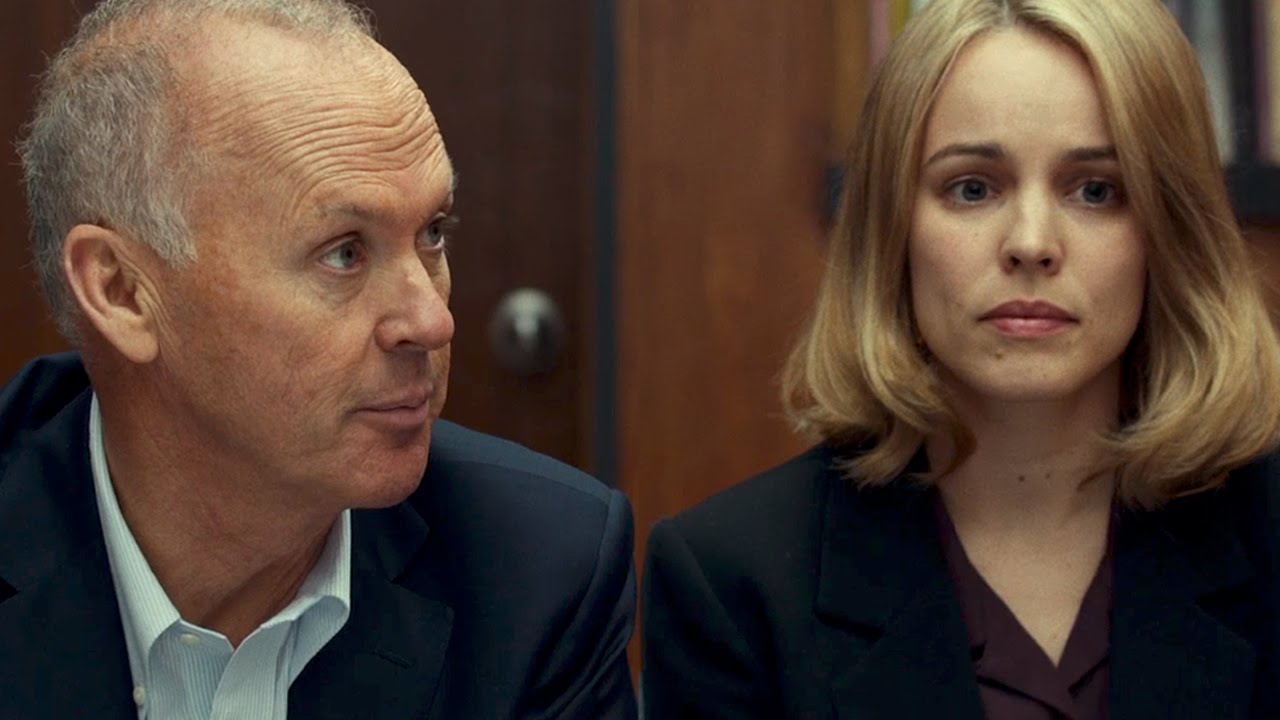
Spotlight’s victory in this year’s Academy Awards doesn’t mark the first time the Best Picture award was given to a movie telling a true story, but it probably stands as the first Best Picture winner to portray real-life journalists in the daily grind of their jobs.
Walter Robinson, Mike Rezendes, Sacha Pfeiffer, Matt Carroll and the rest of the Daily Globe crew made journalism history with their exposé on the Catholic church’s child abuse problem, but they’re not the only newsmen to have their stories told in the big screen.
Of course, there are tons of movies about fictional papers and TV stations that perfectly recreate the experience of making journalism, with all its petty details and vices, but let’s focus on the real stories here, like a real journalist would.
Each and every one of these movies can represent a different aspect of this professional activity – some of them serve as a portrait of investigative journalism, others of war correspondence, and some even to the way journalism shouldn’t ever be done. Here are our picks:
10. Truth (James Vanderbilt, 2015)
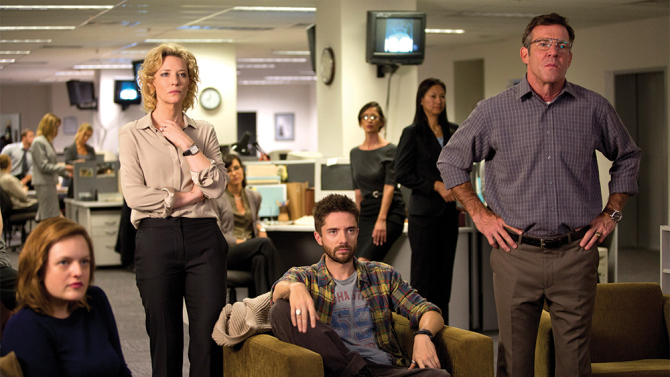
The second big movie about journalism in 2015 ended up hidden in the big shadow Spotlight cast, but it deserves to be discovered, if for nothing else, for Cate Blanchett’s terrific performance as Mary Mapes, the CBS News head that authorized the infamous exposé on then-president George W. Bush use of his father’s influence when to avoid being drafted to Vietnam when he was younger.
The fallout from this bold decision, right before the 2004 election, cost Mapes and anchor Dan Rather their reputations and careers – James Vanderbilt’s movie is based on Mapes’ book about the case, so it’s undoubtedly partial on the way she was treated by the media following the exposé.
It’s Blanchett’s performance, however, that gives her nuance and meaning, a despairing portrait of a polished professional coming apart at the seams. Truth is that kind of tense and surprisingly enthralling movie that gets your pulse racing without any shadow of an action sequence.
Vanderbilt, who wrote another of the movies on this list (Zodiac), excels at conducting this story, at guiding his actors through the plot he adapted from Mapes’ book, and at portraying the pitfalls and perverse little workings of political journalism. It’s not as essential as Spotlight, but it’s still one hell of a ride.
9. Live from Baghdad (Mick Jackson, 2002)
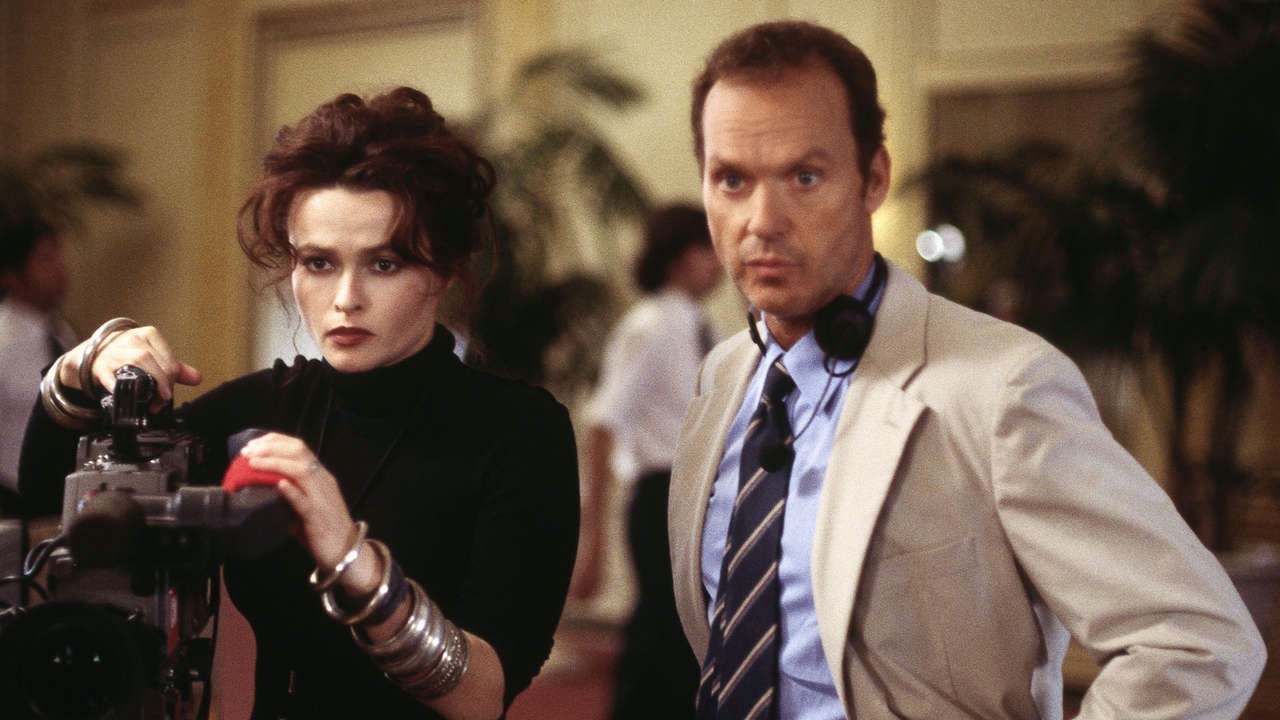
Set between 1990 and 1991, Live from Baghdad, originally produced by HBO, follows Robert Wiener (Michael Keaton), a CNN reporter sent with his crew and his producer, Ingrid Formanek (Helena Bonham Carter), to Baghdad to do in-site reporting about Iraq’s invasion of Kuwait and the possible retaliation from de UN and the US armed forces.
Based on Wiener’s own retelling of his time in Baghdad in the book of the same name, Live from Baghdad portrays the friendship that develops between Wiener and Iraqi Minister of Information Naji Al Hadithi (David Suchet), the stories they covered for CNN, and the brave decision they took to remain in Baghdad even as the country was being bombarded by American forces, making CNN the only broadcast station with a live feed directly from the attack.
Produced with the usual care by HBO and adapted by Wiener himself with the help of John Patrick Shanley (Doubt), the movie became a focus of attention when it was broadcast because of its unique timeliness.
A mere two years later, the US would again go to war in Iraq, and Live from Baghdad showed just how great of an idea that was the first time – in fact, this is one of the few films that actually feature an actor (Jerry Haleva) portraying Saddam Hussein, who conceded two interviews to CNN at the time.
Political positions aside, Live from Baghdad is also a terrific recreation of a group of journalists’ brave commitment to their jobs and their responsibilities to their public.
8. Shattered Glass (Billy Ray, 2003)
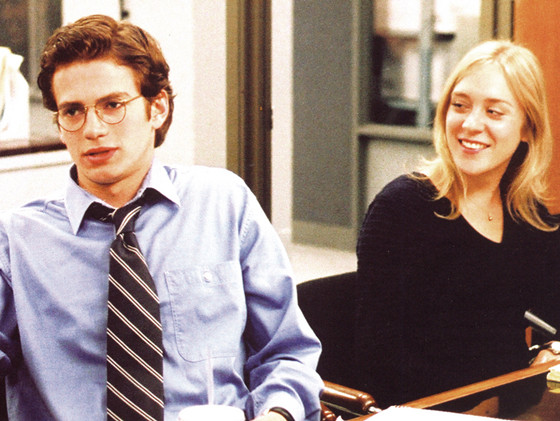
Making a truly observant and gripping film out of Stephen Glass’ story is an exercise on restraint. The real story: a young writer for The New Republic, popular among the readers and the other journalists in the newsroom for his magnetic personality and his colorful pieces, falls from grace once a new editor (Peter Sarsgaard in a Golden Globe-nominated performance) uncovers that most of his stories are partially or completely fabricated.
As many critics appointed, Glass’ quick and merciless fall could have become a self-important cautionary tale on screen, drawing parallels with the current political climate or our fascination for “character stories” in journalism – screenwriter and director Billy Ray, however, chooses not to dwell on Glass’ motivations, but on the good journalists that brought him down.
Hayden Christensen is surprisingly good as Glass, but in fact it is Sarsgaard that comes out on top (and fittingly so), morphing his character’s energy and stiffness into a righteous moral indignation and winning the viewer’s sympathy the same way his character won his own reporters’ respect.
Billy Ray conducts the whole affair without a hint of showmanship, creating tension and involvement ably, but smartly avoiding sensationalizing a story about the dangers of sensationalism. It’s no wonder Roger Ebert said that the movie deserves to be cited with All the President’s Men as one of the best films about journalism ever made.
7. Story of G.I. Joe (William A. Wellman, 1945)
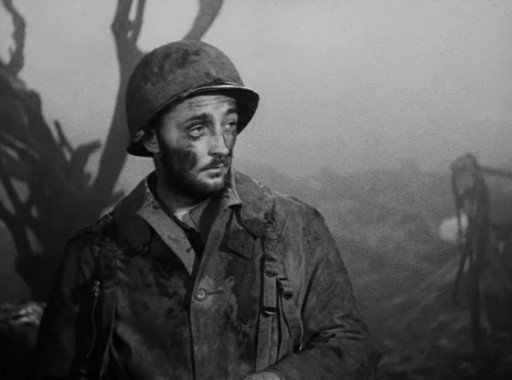
Maybe the most revered war correspondent of all time, Ernie Pyle wrote for a variety of newspapers in his column, initially preferring portrayals of rural America, and later joining the army in the midst of World War II and fighting alongside soldiers up until 1945, when he was taken down by enemy fire.
Story of G.I. Joe is a sincere tribute to Pyle’s courage as a soldier and as a storyteller of his time and the people he encountered in the war – Pyle’s work is known for citing soldiers by name and acknowledging what they had to tell, putting a real face to the horrors of war.
Starred by Rocky’s Burgess Meredith and nominated for four Oscars, including Best Supporting Actor for Robert Mitchum, Story of G.I. Joe stands as a moving, if idealist, portrait of journalism, war and the relationship between the two of them.
The screenplay draws up a fictionalized account of Pyle’s time in Italy with the 36th Infantry Division during the Battle of San Pietro, and with the 133rd Infantry during the Batte of Monte Cassino.
Mitchum’s character, Capt. Bill Walker, is based off on two characters from Pyle’s columns, most prominently on Capt. Henry T. Waskow, an important part of the affecting ending of the movie and the subject of Pyle’s most famous column, The Death of Captain Waskow.
Putting faces and names on the masses of American soldiers who fought on WWII, acknowledging their stories and their lives (lost or otherwise) was Pyle’s calling and the mark he left on journalism and on his readers.
6. Zodiac (David Fincher, 2007)
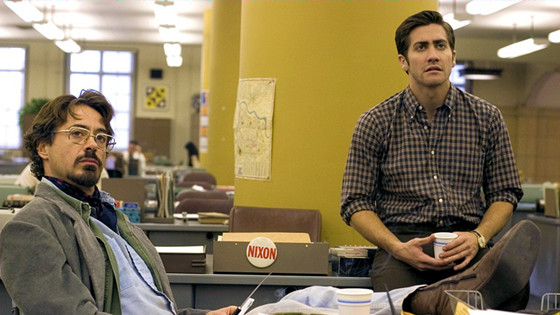
In David Fincher’s grim thriller Zodiac, the search for the still unidentified murderer who terrorized California through the 60s and 70s is followed through both police detectives and San Francisco Chronicle journalists’ points of view.
The protagonist is Robert Graysmith, a political cartoonist played by Jake Gyllenhaal, whose interest on the case was initially rejected by reporter Paul Avery (Robert Downey Jr), but whose obsession with the Zodiac killer made him the most prominent specialist in the matter up until today.
It’s a frustrating movie in a way, but Fincher doesn’t shy away from that, preferring to tell this broken men’s journey through an unsolved mystery and the journalistic commitment put into deciphering the many moving parts of it.
While the killings keep taking place all around the San Francisco area, the Zodiac killer sends letters to the Chronicle taunting the police and describing his intentions and his thoughts, even sending pieces of a victim’s blood-stained shirt in a few instances.
One prominent suspect is brought in (John Carroll Lynch), but the investigation never gets anywhere, and as the killings slow down and stop, the journalists and the police leave the case behind, with Graysmith remaining the only one committed to the investigation.
In Fincher’s particular style of visual elaboration and intricate narrative, Zodiac is a creepy and grave thriller with a bite and an unusual understanding of the domain certain mysteries have upon some of us, especially investigative reporters.